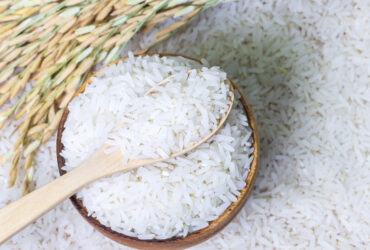The Ultimate Guide to Identifying Ripened Mangoes in Nigeria: Secrets for Savoring Sweet Perfection
Ah, the mango. Nigeria’s sunshine fruit, bursting with juicy sweetness and a tropical aroma that evokes pure summer bliss.
But with so many varieties gracing our markets, how do you ensure you’re picking perfectly ripened mangoes every single time? Fear not, fellow mango enthusiasts!
This comprehensive guide unveils the secrets to identifying ripened mangoes in Nigeria, empowering you to become a mango connoisseur.
We’ll delve into the visual, textural, and olfactory cues that nature provides, so you can confidently navigate the vibrant stalls, select the ripest mangoes, and unlock their full flavor potential.
Why Picking Ripe Mangoes Matters
Imagine this: you eagerly slice into a seemingly perfect mango, only to be met with a sour, unyielding flesh. Disappointment, right?
Picking unripe mangoes not only ruins the taste experience, but it also means missing out on the fruit’s full nutritional benefits. Here’s why selecting ripe mangoes is crucial:
- Flavor: Ripe mangoes are a symphony of sweetness, with hints of floral and citrus notes. Unripe mangoes, on the other hand, are tart and unpleasant.
- Texture: Ripe mangoes have a slight give when pressed gently. Unripe ones are firm and resist pressure.
- Nutrition: Ripe mangoes are brimming with vitamins, minerals, and antioxidants. Unripe mangoes haven’t yet developed their full nutritional profile.
So, the next time you’re at the market, equip yourself with these mango-picking superpowers!

5 Foolproof Ways to Identify Ripened Mangoes in Nigeria
Forget guesswork! Here are five reliable methods to identify perfectly ripened mangoes, tailored to the Nigerian market:
1. The Color Test: Naturally ripened mangoes undergo a color transformation. Look for a base color that’s characteristic of the variety – yellow for ‘Irwin’, green for ‘Apple’ mangoes, and so on. This base color should be consistent, with no patches of green on a yellow mango (indicating uneven ripening).
2. The Aroma Test: Engage your sense of smell! Ripe mangoes release a sweet, fragrant aroma that’s both inviting and distinct to the variety. Avoid mangoes with a faint, chemical smell, which can indicate artificial ripening.
3. The Gentle Squeeze Test: Apply gentle pressure with your thumb. A ripe mango will yield slightly but retain its shape. Unripe mangoes will be firm and offer no give. Be careful not to squeeze too hard, as you don’t want to damage the fruit.
4. The Stem Test: The stem, or peduncle, offers valuable clues. In a ripe mango, the stem will feel slightly loose and detach easily when pressed gently. A stiff, firmly attached stem suggests an unripe fruit.
5. The Water Test (Optional): This method is a bit controversial, but some folks swear by it. Fill a bowl with water and gently submerge the mangoes. Ripe mangoes tend to float due to their lower density, while unripe ones may sink. However, this isn’t a foolproof method, as some ripe mango varieties might still sink. Rely on the other methods for a more definitive assessment.
Beyond the Basics: Unveiling the Secrets of Different Mango Varieties
Nigeria boasts a delightful diversity of mango varieties, each with its own unique ripening cues.
Here’s a quick guide to some popular ones:
- ‘Irwin’: When these sunny yellow mangoes develop a slight orange blush and emit a sweet, floral aroma, they’re ready to indulge in.
- ‘Apple Mango’: As the name suggests, look for a green skin with a slight yellow tinge and a subtle, apple-like fragrance for peak ripeness.
- ‘Julie’: These oblong beauties showcase a vibrant red blush on their yellow base when ripe. Their fragrance is typically sweet and intense.
Remember, these are just general guidelines. Familiarize yourself with the specific characteristics of your favorite varieties for the most accurate assessment.

Bonus Tip: Speed Up Ripening Naturally (if Needed)
If your mangoes are a tad underripe, don’t despair! Here’s a natural trick to gently nudge them towards ripeness:
- The Brown Paper Bag Method: Place the unripe mangoes in a brown paper bag along with an apple or banana. These fruits release ethylene gas, a natural ripening agent. Check on the mangoes daily until they reach the desired ripeness.
Conclusion
With these powerful techniques in your arsenal, you’re well on your way to becoming a mango-picking pro!
Remember, the key lies in observing the fruit’s natural cues – color, aroma, texture, and stem. By employing these methods and familiarizing yourself with different varieties, you’ll be selecting perfectly.















Leave a Reply